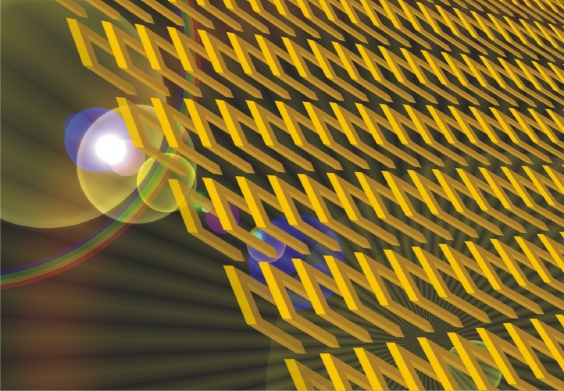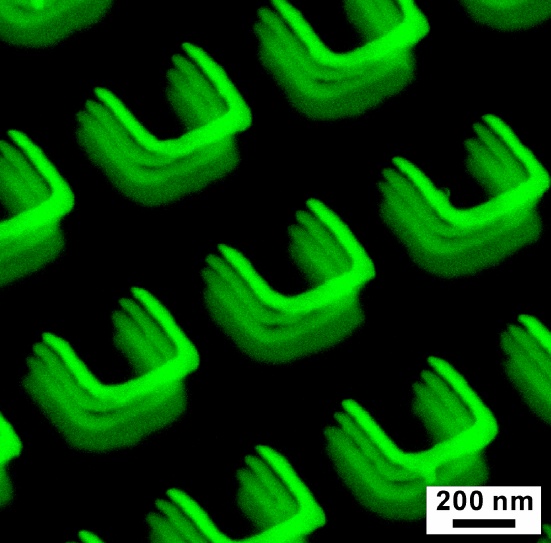Researchers stunned the world when they announced a cloaking device for the microwave range. This device made use of metamaterials that had a negative refractive index for electromagnetic radiation. The metamaterials were carefully designed split-ring resonators with a structure size much smaller than the wavelength. Only 10 stacked layers of metamaterials were necessary to achieve the desired invisibility effect.
Now, researchers from the group of Harald Giessen at the University of Stuttgart have succeeded in manufacturing a stacked split-ring metamaterial for the optical wavelength range (Na Liu et al., Nature Materials Jan. 2008 issue). This layer-by-layer stacking procedure, which can be repeated as often as desired, is capable of producing well aligned three-dimensional metamaterial structures.

The key to this achievement was a planarization method for the rough nanolithography surface in combination with robust alignment marks which survived the dry etching processes during nanofabrication. This resulted in perfect lateral alignment as well as in perfectly flat layers. The method is suited to produce arbitrary shapes in each layer as well. Thus, more complex structures such as twisted or chiral structures are possible.
The present 3D structures consist of horseshoe-shaped gold nanowires that are arranged in a square pattern and perfectly stacked above each other. Due to the strong vertical coupling, broadband optical features arise. Also, the vertical coupling leads to negative permeability of the structure, which is a prerequisite for a negative refractive index.

Possible applications in the future include perfect lenses that beat the diffraction limit, and optical cloaking devices which provide some invisibility for macroscopic objects.


